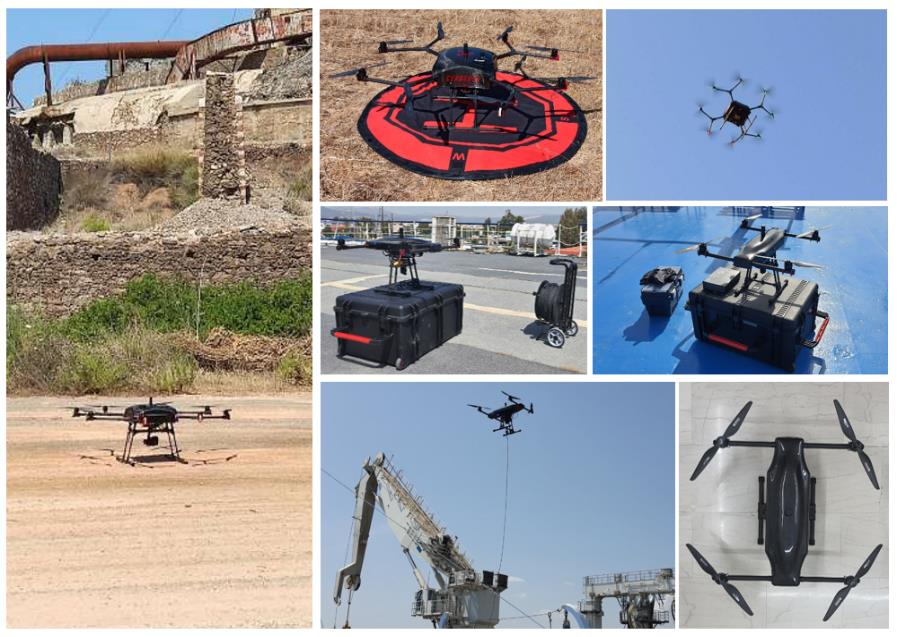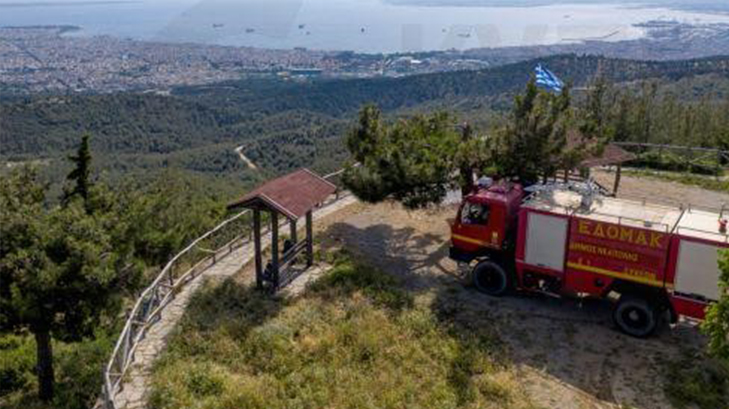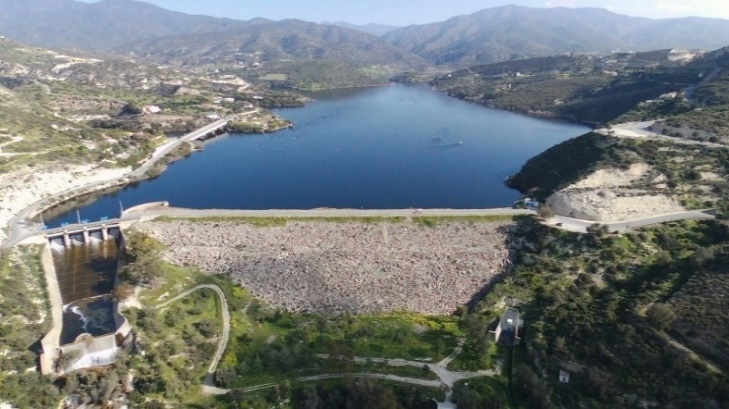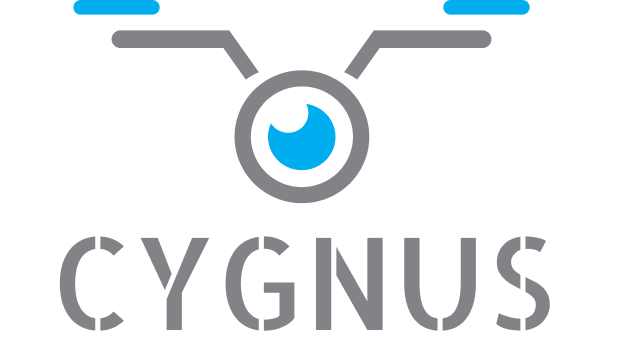A few months ago, the CYGNUS project embarked on a journey of innovation with one of the primary objectives being to conceptualize, execute, and deliver cutting-edge functionalities for both on-the-fly edge computing and Unmanned Aerial Vehicles (UAVs). In this pursuit, the CYGNUS project refines and augments CERBERUS and F1T UAV prototypes[1], equipping them with the capability to execute advanced edge AI algorithms. This includes handling tasks of notable complexity, such as event detection, object/human detection and counting, and hotspot identification. The deployment plan within the CYGNUS framework involves incorporating both a tethered and an octocopter drone. These UAVs will play a vital role in operations related to Fire and Civil Protection, as well as meeting the demands of Critical Infrastructure and Emergency Response. In this blog post, we eagerly reveal the pivotal role of UAVs within the CYGNUS project, shedding light on their cutting-edge capabilities. Join us as we explore the transformative potential of these innovative technologies in essential areas, including safeguarding civilians and monitoring critical infrastructures.
CYGNUS UAVs

|
Figure 1. CYGNUS UAVs |
Within the Cygnus project, the UAVs provided by ACCELIGENCE encompass two cutting-edge platforms: CERBERUS and F1T, each pushing the boundaries of aerial inspections with unparalleled payload capabilities. CERBERUS, an octocopter multirotor aerial vehicle, represents the pinnacle of innovation, boasting a comprehensive suite of payloads tailored to excel in the most demanding missions. With its customizability, CERBERUS seamlessly integrates various payloads and an on-board computing board able to execute the most demanding AI algorithms, enabling it to adapt to a wide range of operational needs. Complementing its capabilities are a sophisticated GNSS module for precise localization and navigation, alongside a cutting-edge distance sensor for accurate altitude estimation, ensuring safe and efficient flight operations in any environment. On the other hand, F1T emerges as a sentinel in the sky, equipped with cameras featuring high-resolution visual and thermal imaging capabilities, enabling robust surveillance operations in 360 degrees. Its tethered setup ensures continuous power and data transmission, empowering F1T to conduct camera surveillance 24/7 with theoretically unlimited flight time. With their robust designs and advanced payload capabilities, CERBERUS and F1T are poised to revolutionize aerial inspections, setting new standards for efficiency, precision, and versatility in ensuring the safety and security of critical infrastructures and the public.
Applications
In the last decade, UAVs have been employed in an ever-increasing range of civilian applications. The continuously evolving and complex asymmetric threats against people or infrastructure demand improved surveillance strategies.
Within the framework of demonstration and validation for the CYGNUS project, addressing these pressing challenges takes center stage. CYGNUS will strategically institute evaluation and validation scenarios, aiming to meticulously assess the overall usability of the CYGNUS Platform. These scenarios will integrate real operating conditions and use cases for civilian applications. To achieve this, the UAVs will be categorized into two groups based on their computational and communication capabilities. The goal is to enhance intelligence at the edge and ensure efficient resource management. CERBERUS and F1T will play a crucial role in enhancing resilience and safety in these diverse scenarios. CERBERUS, with its versatile design and technical capabilities, provides swift responses to emergency situations and conducts situation risk assessments. Equipped with a top-tier computing board, it can run the most demanding AI algorithms, offering real-time images and crucial information. By running algorithms onboard, CERBERUS will provide details in near-real-time, aiding responsible personnel in assessing situations and taking required measures. For instance, during an earthquake, CERBERUS can swiftly detect cracks and deformations in structures like water dams with unparalleled accuracy, ensuring the integrity of vital networks.


|
Figure 2. CYGNUS Demonstration Scenarios |
Meanwhile, F1T also plays a crucial role in civil protection efforts. With its 360-degree surveillance capabilities, F1T stands as a stalwart guardian, conducting continuous monitoring operations to safeguard communities from potential threats. Equipped with advanced technology, including high-resolution visual and thermal imaging capabilities, F1T provides invaluable situational awareness, enabling timely responses to emergencies. Whether detecting fires or identifying suspicious activities, F1T's adaptability and precision make it an indispensable tool in enhancing resilience and safety. Together, CERBERUS and F1T redefine the landscape of civil protection, offering innovative solutions to address the challenges of tomorrow. To this end, CYGNUS aims to substitute the manually crafted policies of automation used nowadays for UAVs' evaluation and control in various civilian applications.

